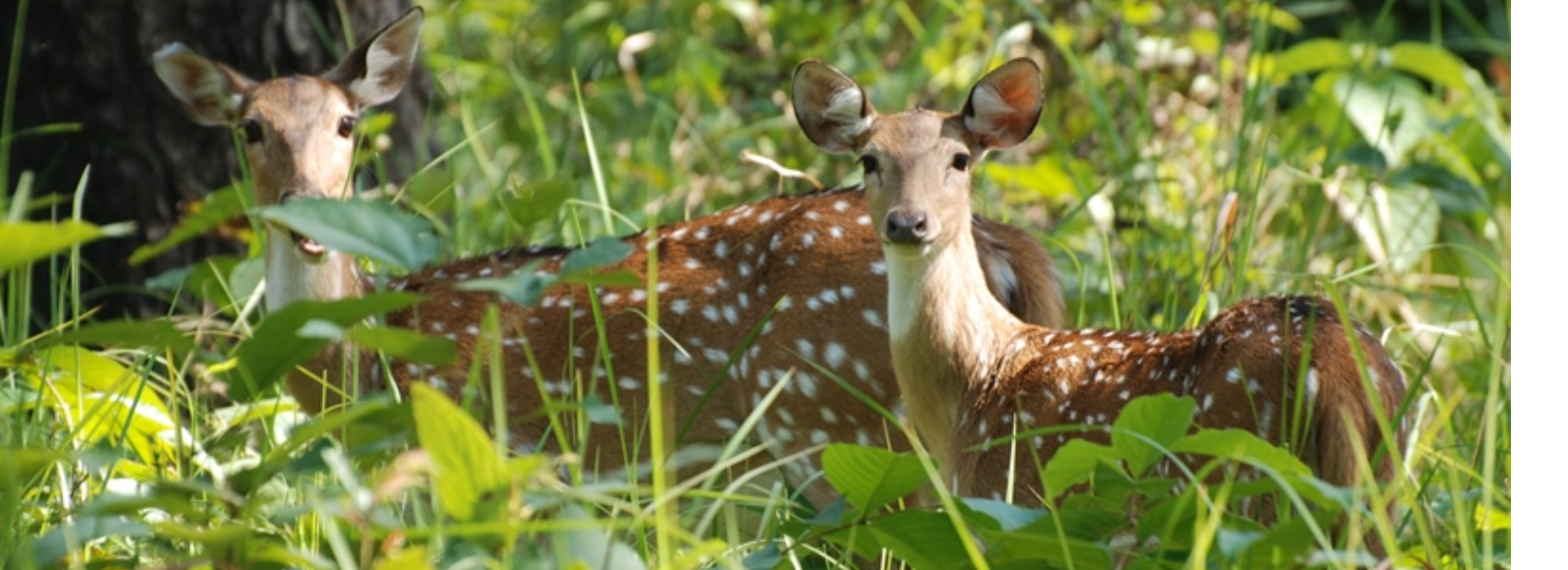About Shuklaphanta Wildlife Reserve
Shuklaphanta Wildlife Reserve lies in the extreme south-western Terai region of Nepal which is in Kanchanpur district. Beginning in 1969, this national park is managed as hunting reserve later in 1976; it is converted as Shuklaphanta wildlife reserve. This wildlife reserve covers an area of 305 square kilometers. This area was famous for hunting area for royalties of Nepal and in 1969 it also declared as a Royal Hunting Reserve. This wildlife reserve is bordered by on the eastern side by Chaudhary River and to the north by a forest belt and cultivation. This protected area is known for its vast grasslands and Sal forests where the reserve is aptly named ‘phanta’ meaning grassland in Nepali.
This wildlife reserve preserves a lot of endangered animals here. There are almost 53 species of mammals, 430 species of birds and from them 180 species of birds are breeding species, 14 species of fishes, 56 species of reptiles, and 10 species of biting flies. The wildlife reserves a wide range of biodiversity which is nationally or globally very much important. It is covered by opened grassland, forests, riverbeds, and tropical wetlands. And this wildlife reserve is also known as Nepal’s largest grassland patch. It is one of the richest wildlife reserves in Nepal and the open grassland and many waterholes of the park extend into a vast expanse plain grassland and Sal forest.
During this tour, we get an opportunity to see many wild animals. The wild animals like leopard, sloth bear, swamp deer, wild Asian elephant, barking deer, spotted deer, Hog dog, monkey and many more. There are almost 430 species of birds which are Bengal floricans, Indian grass bird, and many more. If you are lucky enough, you will get an opportunity to see endangered animals like Royal Bengal Tiger and one-horned rhino in this wildlife reserve.
Short History
The reserve is aptly named ‘phanta’ meaning grassland in Nepali. It is the largest patch of continuous grassland in Nepal covering an area of about 16 square kilometers. This hunting reserve is a vacation spot of Rana rulers, so this hunting reserve was hunting reserve. So this reserve was declared as Royal Hunting Reserve in 1969. Later in 1976, this hunting reserve is declared as Shuklaphanta wildlife reserve. But in 2017, it was renamed as Shuklaphanta national park.
The jungles of this national park were once site of an ancient kingdom and the ruins of the kingdom can see in some places. There remains a brick girdle, measuring 1500m in circumference near Rani Tal which is considered by locals to be a remnant of the fort of Tharu king Singhal. The actual area of this wildlife reserve is 155 square kilometers, and it was extending present size in the 1980s and later in 2004, a buffer zone of 243.5 square kilometers was added.
Activities to do in Shuklaphanta National Park
There are so many beautiful places to visit around the national park which offers a lot of activities. It is a wonderful treat of wild far-west land where we do bird watching, jungle safari, explore jungle on elephant back, and Tharu culture and tradition.
Bird watching: There are almost 430 species of birds and from them 180 species of birds are breeding species in this national park. Many visitors came here for bird watching.
Jungle safari: This is one of the well-like activities in the Shuklaphanat national park. While doing jungle safari on Shuklaphanta National Park, we get an opportunity to see variety of flora and fauna.
Explore jungle on elephant back: You can go on jungle safari on elephant back. It is one of the most adventurous things to do at Shuklaphanta national park. We also get an opportunity to see wildlife like tiger, deer, leopard, wild bear, and many other wild animals.
Tharu culture and tradition: On this national park tour, we get an opportunity to know about the culture and tradition of Tharu people. On this tour, we get an opportunity to know about the culture and tradition of far-western Nepal.
How to get Shuklaphanta Wildlife Reserve?
To reach Shuklaphanta Wildlife Reserve, we have two ways to go there. If you have limited time, then you can take a night bus from Kathmandu. The actual time 18 hours from Kathmandu to Mahendranagar, but just because of road construction, it takes almost 20 to 22 hours to reach here. It consumes a little bit of time but is less expensive. We can also go by flight.
By flight, it takes 1-hour 15 minutes to reach Dhangadhi and from Dhangadhi, we will drive toward Mahendranagar. It takes almost 45 minute or 1-hour to reach Mahendranagar from Dhangadhi. The national park is 8 kilometers south-west of Mahendranagar. From Mahendranagar, you have to take a Rickshaw, and auto rickshaw to get there. For more comfortable, you can also hire a private jeep to get into the Shuklaphanta national park. It will be more comfortable if you take private jeep from Dhangadhi.
